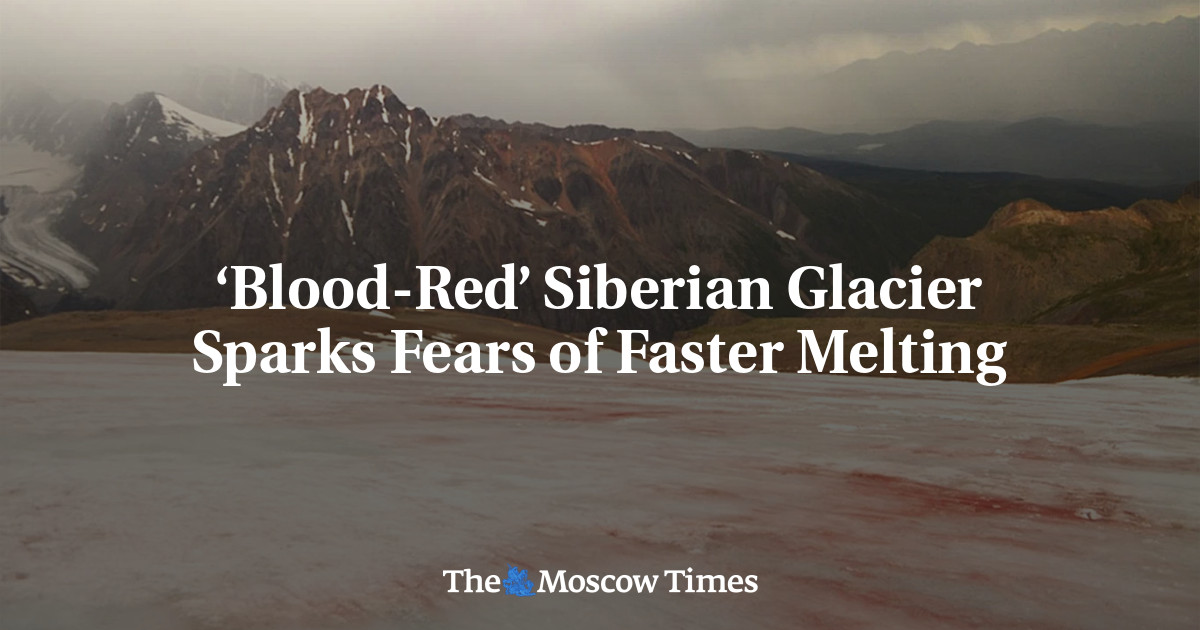
A Siberian glacier has turned crimson red from algae bloom, raising the likelihood of even faster ice melt than at the current rate triggered by climate change, Russian scientists warned Monday.
Red algae covers glaciers in the Altai Mountains near Russia’s borders with Kazakhstan and Mongolia every year, Tomsk State University’s (TSU) Faculty of Geology and Geography said in a statement.
“But such a large-scale phenomenon has not been observed in more than 10 years,” said Alexander Yerofeyev, the head of TSU’s Laboratory of Glacioclimatology.
Footage from his recent expedition posted on the university’s YouTube page showed streaks of red across a large area of the Vodopadny glacier.
The phenomenon, known as “watermelon snow” or “blood snow,” is a common summertime occurrence in alpine and coastal polar regions around the world.
Yerofeyev said a sample of the red algae collected from the Vodopadny glacier was sent for identification to TSU’s biology institute.
He hypothesized that the samples are likely cold-loving algae called Chlamydomonas invalis, which are known to give the snow a red pigmentation, darkening the surface of a glacier and contributing to accelerated ice melt.
The glacier melt would further contribute to the ongoing loss of ice in the group of glaciers known as Aktru, which includes the Vodopadny glacier. One of the group’s glaciers, the Leviy Aktru, has lost more than 25% of its mass over the past 60 years, according to TSU.
The algae appear to have thrived in the 30-year record snowfall that remained in the Altai glaciers well into July, Yerofeyev said, adding that TSU scientists are yet to definitively establish the cause of the mass algae bloom.